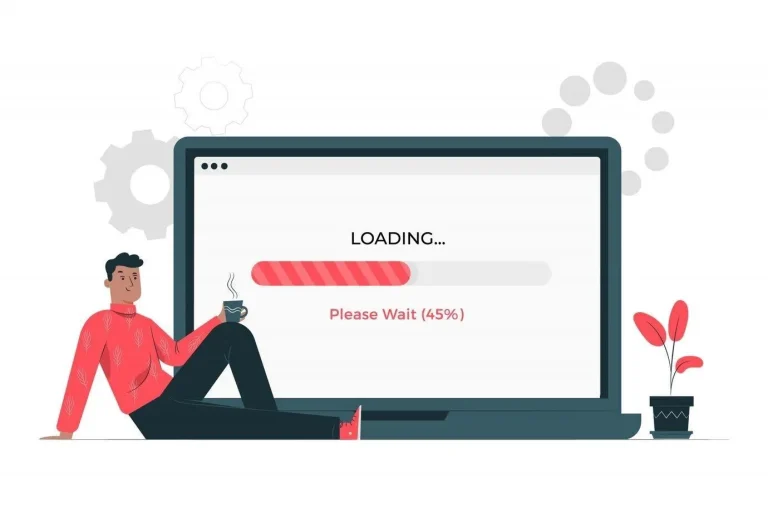It’s not new for Google to block ads that hamper the user experience. The media giant is a member of the Coalition of Better Ads, which clearly defines user-friendly ads. Google blocks ads that do not adhere to the standards set by the coalition.
It blocks resource-intensive ads. The ads are blocked across all sites through the Chrome Browser. These ads are not related to the Better Ads Standards. These are separate sets of ads that Google declares ‘heavy ads.’ Let’s understand what heavy ads are and how to avoid them.
Table of Contents
What Is a Heavy Ad?
Google defines heavy ads based on two criteria.
- Users shouldn’t have interacted with it.
- Any one of the following conditions is met:
- The ad uses the main thread for more than 60-seconds in total
- It uses the main thread for over 15 seconds in any 30-second window.
- It uses more than four megabytes of network bandwidth.
If the ad meets both criteria, Google classifies it as a “heavy ad” and removes it.
But wait, what’s a thread? Devices like smartphones and PCs run multiple processes at a single time. Furthermore, every task within a process is carried out via the threads inside it. So, using too many threads or using the threads for a long time can bring heaviness to the process.
Google doesn’t want any ad to do that. Cryptocurrency mining ads, poorly compressed ads, and ads that preload video files are generally heavy.
The Heavy Ad Intervention
Technically, Chrome is not blocking the ads. Otherwise, it would’ve called it Heavy Ad Blocking. Instead, this feature is called Chrome’s Heavy Ad Intervention. The browser allows the ad on the site, it lets it load on the page, the ad gets a fair chance to be displayed, and it might even appear in front of the user, but the browser intervenes only if the limit is crossed.
Here’s a demo. Interestingly, the demo works even on the Microsoft Edge Browser. So, it’s clear that every browser built on the Chromium platform will disallow heavy ads.
Why Is the Intervention Needed?
User experience has paramount importance in the ad tech industry. If ads cause discomfort, users will be motivated to install ad blockers. While only a few publishers with intrusive ads push the user towards adblockers, every publisher starts losing revenue once installed. One in every four users already uses an ad blocker, and initiatives like Chrome’s Heavy Ad Intervention try to reverse the trend by removing the discomfort from browsing.
Why are heavy ads harmful to the user?
Heavy ads can cause a lot of problems for the user. They can slow down the page, eat up the data plan, drain the device’s battery, make it sluggish, etc. Any user can start considering ad blockers if such problems persist with the web browsing experience. Heavy Ad Interventions can help to improve the situation by minimizing such experiences.
How Does Chrome’s Heavy Ad Intervention Impact You?
“This is a VERY high priority for us as we have a lot of client revenue tied to these video products that our company is dependent on being able to successfully monetize and fulfill contracts.”
As a publisher, this policy can impact you in many ways. You can lose your impressions and your revenue along with them. Your campaigns may not deliver the expected results. You may lose your clients if they are not aware of the problem. It can be embarrassing when you promised great results with your premium placements; all you could deliver were blank spots. Yes, it’s possible, and it happened with none other than The New York Times.
But, the overall impact may not be too large. Heavy ads are rarely seen on the internet. Google’s test found that only 0.3% of the ads fall under the heavy ads category. The proportion should be similar.
How to Know if Google Is Blocking Your Ads?
You have to set a reporting mechanism to know if Google is blocking heavy ads on your site. The browser will share the heavy ads-related errors through the Reporting API. You’ve to set the Reporting-Endpoints header in the HTTP response.
For example, Reporting-Endpoints: default=”https://example.com/reports.” The endpoints will start receiving the error reports. Check the reports regularly and take measures whenever you find heavy ad intervention.
Look out for anomalies in campaign performance and check the ads if the performance isn’t up to your expectations. In rare cases, visitors may want to inform you after seeing such ads, so set an easy reporting system for them.
What Can You Do About It?
Prevention is better than cure. So, avoid the chances of delivering heavy ads. Here are some tips:
- Educate your buyers that Chrome can block their ads if they are heavy. Explain to them what it means by ‘heavy ads.’ Ask them to avoid creatives that can fall under the heavy ad category.
- Measure your creatives before launching a campaign. Compress them if the size is larger than 4 MB.
- Be extra cautious with video and rich media ads, as they can have a large file size.
- Ask your demand sources whether they have made all the arrangements to prevent the heavy ads—partner with the ones with a good quality control process.
- Use third-party services that audit and validate your ads. Ensure that they inform you as soon as they spot heavy ads.
- Start using Google’s Ad Audit Tools.
- Regularly monitor the information from the Reporting API. If you see a heavy ad error, find out the source of the creative. Inform the sender party before many such creatives are delivered.
- Search for ad validation tools online (examples include HTML5 Validator, Advalidation, and Creativeqa). You’ll find validators that can review your ads with just a drag and drop.
- For random testing of the live ads on your site, make sure that the intervention is enabled on your site by going to:
chrome://flags/#enable-heavy-ad-intervention.
You’ll get a restart prompt after enabling the feature. So, restart the browser and start auditing the site.
- You can also use Chrome’s Dev Tools to check an ad’s network and CPU usage. Refer to the documentation about handling heavy ads.
Final Thoughts
If you know that your ads can’t be heavy, then the Heavy Ad Intervention may not be a big issue. But publishers with most of their ads in video or rich media formats should take it more seriously. Study Google’s documentation on handling heavy ads and set up the testing and reporting system for them. Take the help of the Reporting API documentation as well.
Ultimately, Google is finding ways to create a user-friend ad experience across the web. The question is, are you serving ads in a useful way to your audience and advertisers?























